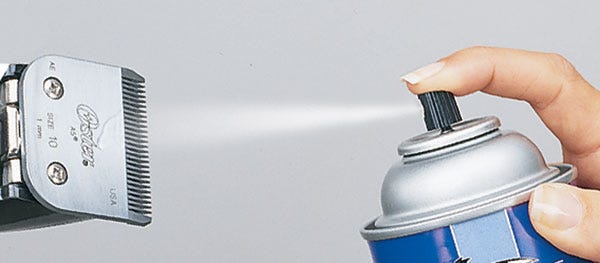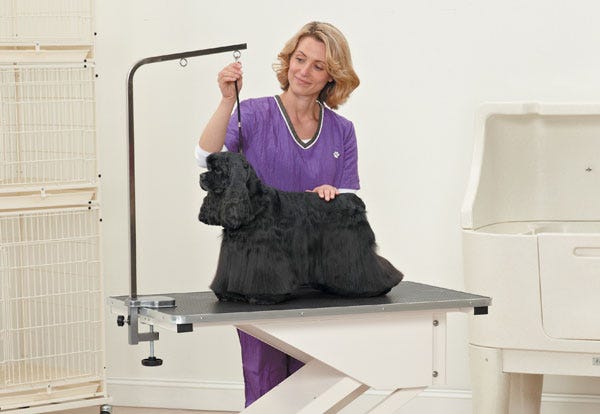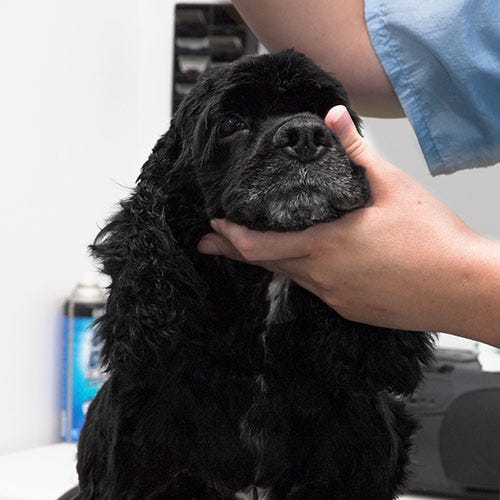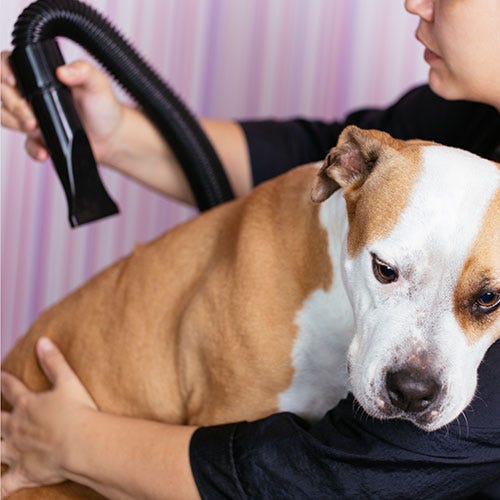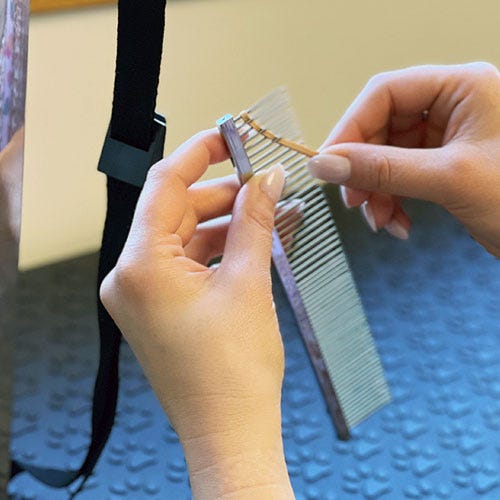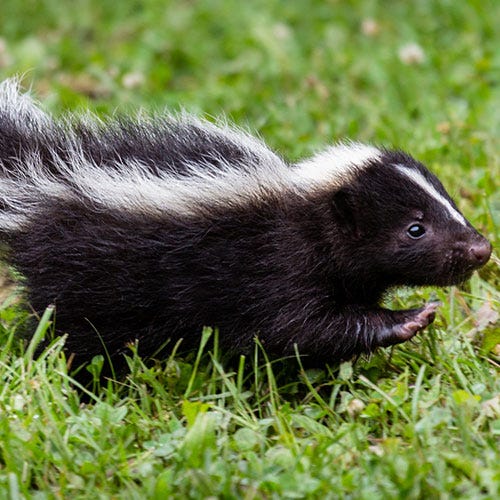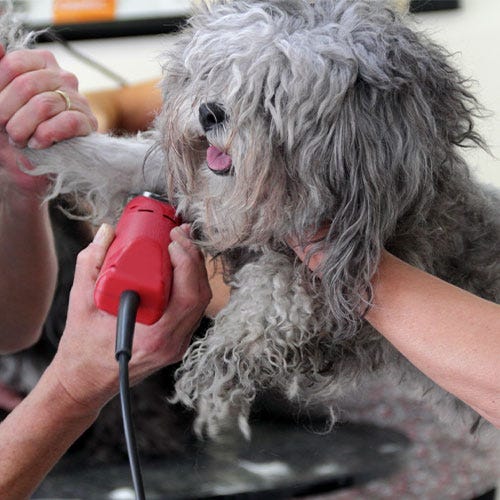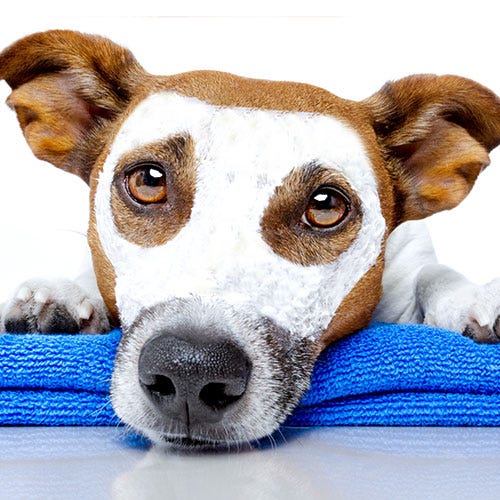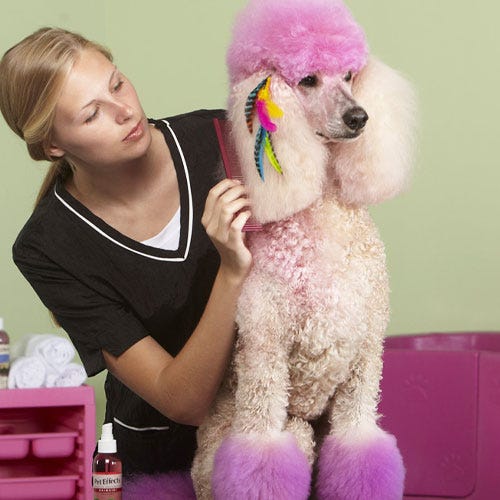The best way to keep your blades sharp and ready for use is to clean and oil them regularly and often. They will stay sharp longer if maintained properly and less likely to cause clipper irritation (commonly called clipper burn but it’s caused by dull or dirty blades or poor clipping technique more often than hot blades – or just by supremely sensitive skin on a dog).
How long does it take to take proper care of your blades? Not long. And it saves money because each time they are sharpened metal is removed and eventually they cannot be sharpened any more. Unnecessary sharpenings speed up the moment they need to be tossed out, so regular maintenance extends their lifespan.
Blades should be cleaned and/or disinfected between each dog to prevent the spread of disease or common skin problems. Disinfecting sprays specifically for blades should be used as many household products will pit or mar blade surfaces. Oster Disinfecting Spray or Oster 5 in 1 work, as does Andis’ Cool Care Plus - or Wahl’s Clini Clip is specifically designed to sanitize blades rather than all tools. Or simply use a blade cleaning product that’s in a spray bottle such as Andis Blade Care or Top Performance Extend-a-Life. Blades should be oiled after applying any of these. Cleaning between dogs can be complemented by sanitizing using ultraviolet light. One brand, Tool Klean, was developed by Lynne Allen, a former groomer. There are cabinets available to put blades, scissors and tools in but her wand sanitizer is quick and easy to use.
How often should blades be oiled and cleaned? You can never go wrong following the recommendation of the blade manufacturer, but in general blades should be disinfected between each dog, oiled often, and ideally cleaned daily.
Blades have a large blade surface and a smaller blade that goes back and forth that does the hair cutting. When the clipper’s blade drive moves back and forth at somewhere between 2,000 and 4,500 strokes per minute, that creates a lot of friction. While ceramic blades and slower end speeds may generate less friction it’s still enough to heat blades up and increase drag significantly. That’s why oil is needed, just as it is in anything that has moving parts from your car motor to a squeaky door hinge. A good lubricant will reduce that friction which will save wear and tear on your clippers, reduce blade heat, allow blades to cut more efficiently, and help prevent wear and corrosion on the blades. A little oil will do a lot.
Blades should be oiled frequently. If your clipper noise slows a bit, your clipping is harder, your blade gets too warm, and every time you use a disinfectant or coolant on the blade – with it still on the clipper, wipe both sides of the blade with a paper towel to remove debris and hair. Turn the clipper back on and with it running, put a drop of oil 1/3 of the way down the blade surface and another 2/3 of the way. With the blades running, the oil should be dissipated between the comb (large blade) and the cutter but if there is excess oil that might get on the dog’s coat, just shut off the clippers and wipe again with a paper towel.
Cleaning blades thoroughly should be done after each dog. To avoid doing this during grooming time, keep several of each blade length on hand and put them aside once used, and pick up a fresh one. Clean them all at day’s end. Put newspaper or paper towels on your table or a counter, put all the blades you used on it. Grab a 16 ounce jar of blade cleaner – there are several kinds to choose from and all seem to work well in my experience. Clean excess debris from blades with a toothbrush or similar tool and put the blade on a clipper. With the clipper running immerse only the teeth of the blade into the liquid and run for 10-20 seconds. Lift out, wipe blade (unless instructions say it requires a longer contact time), lay down on newspaper or paper towel. *Hold clipper in a downward position – if blade cleaner should get into the housing which is possible on some models, it will NOT go well for the clipper. Do next blade. When all are done, they should be wiped again and oiled. While many of the blade wash products do provide some lubrication, the viscosity is different than blade oil and can’t be counted on to lubricate correctly. Since the blade is off the clipper you can do a more thorough job oiling. Pick the blade up and slide the cutter 2/3 of the way out from under the tension spring (the humped metal piece that holds it in place) and place a drop of oil on the cutter and on the comb blade, on the inside where they’ll meet. Push the cutter 2/3 of the way out the other way and repeat the two drops of oil. Push the cutter back into place – now much easier since it’s lubricated. Be careful not to push the cutter all the way out, it isn’t easy to get it back in again.
It's much faster to keep several sets of the same blade lengths in use so that you use a blade on one dog and then put it aside for cleaning later, but another method is to use one of the blade cleaning product in a spray form, such as Andis Blade Care or Top Performance Extend-a-Life. Spray on the blade while running, wipe, oil all with the clipper running (and pointed downward).
Expending a little time and a few inexpensive products can mean easier, faster clipping for you, safety for your four legged clients and reassurance to your two legged clients that their pet is in good, caring hands.
By Carol Visser, Journalist, Master Pet Groomer, Certified Dog Trainer, Pet Product Expert
By Carol Visser, Journalist, Master Pet Groomer, Certified Dog Trainer, Pet Product Expert

